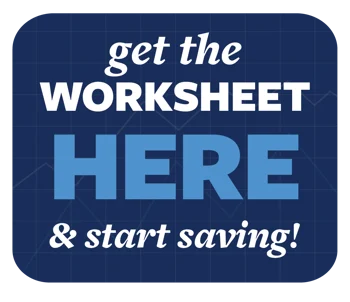401(k) Decoded Part 2: How It Works
After reading our last article, you’re familiar with the basics of what a 401(k) is and how powerful it can be, but how does it all come together? How does that deduction from your paycheck turn into a comfortable retirement? Strap in—we are about to take a deep dive into the mechanics of the 401(k).
Understanding the Mechanics
Contributions
When you participate in a 401(k), you elect to set aside a portion of your income from each paycheck. You can choose a specific dollar amount or a percentage of your pay to contribute. For a Traditional Contribution, this sum is taken out before taxes, reducing your taxable income for the year. On the other hand, you might also have the option of a Roth Contribution. With this, your contribution is made after taxes have been taken out. While both approaches have their benefits, the best choice depends on your individual financial situation and future tax expectations. It's essential to consult with a financial advisor to determine which strategy aligns best with your goals.
Employer Match / Profit Sharing
Who doesn’t love free money? That's essentially what an employer match offers. When you choose to set aside a portion of your paycheck for retirement, many employers will match a percentage of your contribution. For instance, a popular matching strategy is for employers to contribute 50% of what you contribute up to 6% of your pay. This means that if you contribute 6%, they contribute an additional 3%, bringing the total to 9% heading into your retirement account. In addition, some employers offer what's known as a profit sharing benefit that potentially adds even more money to your 401(k). To understand the specifics of your employer's matching program, reach out to your company's HR department.
Vesting
Your company might use what's known as a "vesting schedule." In simple terms, this schedule outlines how much of your employer’s contributions to your 401(k) belong to you at different points in time. It's typically expressed as a percentage. Let's say after 3 years, you're 80% vested. This means if you decided to leave the company in year 4, you'd have the right to 80% of the total contributions your employer has made on your behalf, i.e. the match and profit sharing portion. Remember, you're always 100% vested in the amount you personally contribute. So, every dollar you put in is always fully yours. If you have old 401(k) balances you don’t know what to do with, reach out to us—we can help!
Investment Options
Now that your funds are in the 401(k), what's next? It's time to put them to work! Your contributions to a 401(k) need to be invested, and you'll likely have several options to choose from. Common choices include stock funds, target date funds, bond funds, and money market funds. Selecting the right mix can set your money on a path to growth, harnessing the power of compound interest. Some plans will automatically invest your funds for you, so it's important to understand what you own. You can handpick these options yourself or let an expert advisor like CPS Investment Advisors handle the investing for you!
To Wrap it Up
The 401(k) is a potent tool in your financial arsenal. Beyond its ability to act as a savings vessel, it offers the potential for compound growth that can substantially increase your wealth over time. By understanding its mechanics, actively managing your investments, and consulting with financial professionals when needed, you can make the most of this golden opportunity. Remember, it's not just about saving; it's about making every dollar work hard for you to achieve and protect your financial independence.
If you want to see if you’re on track for retirement, download our free 401K Savings Worksheet! I will personally run your numbers and provide clear, actionable insights. Let me help you navigate the path to your secure and prosperous financial future. Click the image below to download now and let’s start this journey together!








